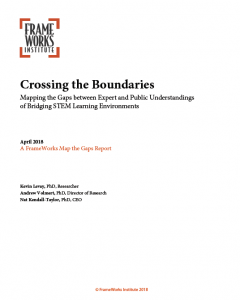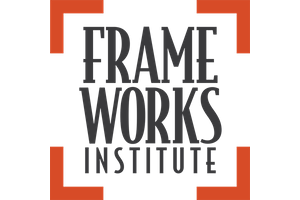
To prepare for a 21st-century workforce, students across the country are developing skills in science, technology, engineering, and math (STEM). But STEM learning doesn’t only happen in the classroom; it also happens at home, at the library, in museums, and in afterschool and summer programs.
Informal settings like these are essential to STEM learning, yet members of the public don’t fully appreciate the value of STEM learning outside of school or understand the need to bridge—or connect—STEM learning that happens in different environments.
How can advocates make a stronger case for bridging STEM education across settings? A new report by the FrameWorks Institute offers insights. Supported by the Oath Foundation, the Heising-Simons Foundation, and the Bezos Family Foundation, the report is part of the Families Learning Across Boundaries (FamLAB) project, which is led by the Joan Ganz Cooney Center in partnership with FrameWorks, New York University, and Stanford University.
The report finds that advocates face numerous challenges in public thinking, such as:
- The public focuses on people, not places. When Americans think about STEM education, they think about people, such as teachers, and their characteristics and qualifications. They rarely think about the influence of environments, such as school resources, building design, and cultural norms. When they do think about environments, they tend to focus on school and home, but not other sites, such as libraries, museums, daycare, afterschool programs, or summer camps.
- The public views technology as an unhealthy distraction. Experts see technology as a powerful learning tool, but members of the public see it as a distraction and worry about its effects on kids’ social connections. As a result, the public sees technology as something that must be restricted and curtailed—rather than subsidized and supported.
- The public thinks integrating learning across settings is simply about reinforcing school-based content. Experts argue that connecting and integrating learning across environments deepens and advances learning, but the public doesn’t see it this way. They don’t understand the unique value of STEM learning in alternative settings or that connecting it to school-based content deepens mastery of STEM content.
These and other findings are summarized in “Crossing the Boundaries: Mapping the Gaps between Expert and Public Understandings of Bridging STEM Learning Environments.” This report compares expert and public thinking about this issue and offers advocates strategic advice to overcome challenges in public thinking.





